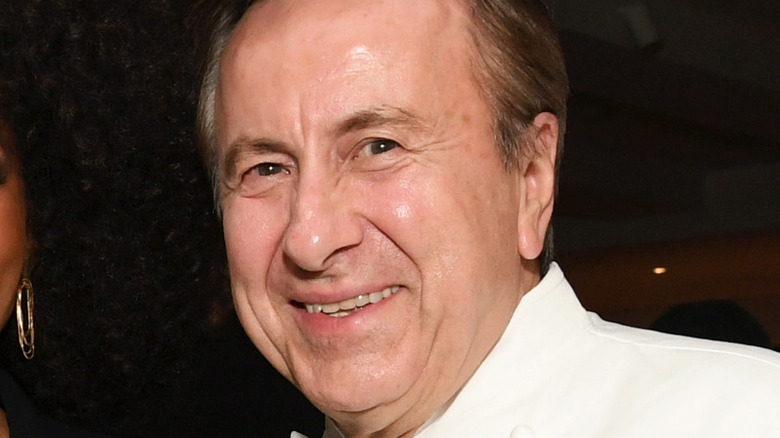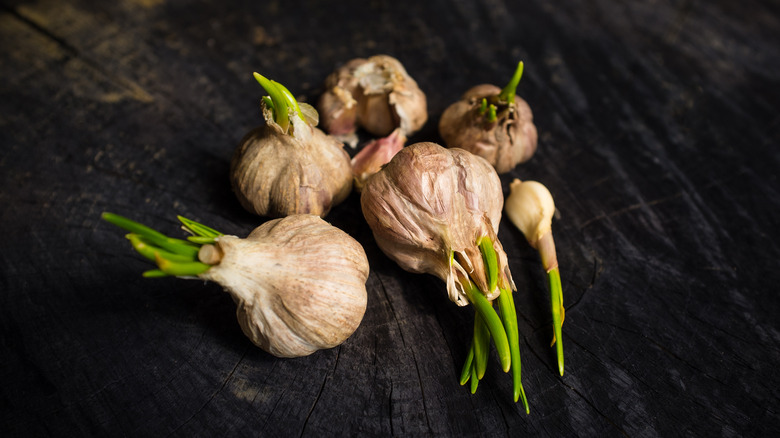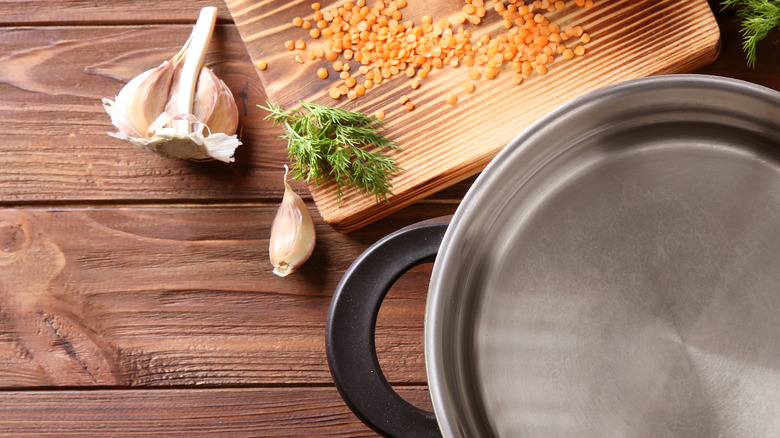The Extra Steps Daniel Boulud Takes When Prepping Garlic For Aioli
Like mayonnaise, aioli is also an emulsion consisting of egg yolks, oil, and a dash of mustard. However, the key difference is that mayonnaise uses a neutral oil and a splash of vinegar, whereas aioli uses olive oil and a generous helping of garlic. How you incorporate the garlic into your aioli can widely determine the overall taste of your sauce, and who knows better than the ever-so-famous celebrity chef Daniel Boulud?
The French chef and restaurateur is a huge advocate for making every recipe your own. After years of experience, he cracked the code on not only how to prepare the best aioli, but the best way to incorporate garlic into it for a slightly sweet, flavorful condiment that is subtle.
Unlike many traditional recipes for aioli that start with raw egg yolks, chef Boulud actually uses a triple poaching method. He blends his egg yolks with one freshly poached egg, which gets the emulsion going. He incorporates and prepares the garlic by removing the green germ, poaching the cloves not once, but twice, and then throws in a clove or two of raw garlic for a hit of zing. Let's break down each step so that folks at home can master it just like Boulud.
He removes any green germs from garlic
If you've ever had a head of garlic for a bit longer than you'd like, only to find some green stems sprouting from the cloves, don't worry. These green stems are known as green germs, and while the term "germ" is rather alarming, they're completely safe to consume. It actually refers to a tiny part of the stem that exists in every garlic clove.
This stem feeds off the starch from each clove in order to continue growing, and if you wait long enough, it can surprisingly produce its own garlic plant. The only downfall of incorporating a green germ in with your chopped garlic is the unpleasant flavor they can produce, as they start to turn your cloves quite bitter after some time.
In fact, chef Boulud states that when working in kitchens in France back in the day, the word the head chef used to describe the taste the germ was "vulgur." Ever since, chef Boulud splits every clove of garlic he's using in half, and if there is any sighting of green germs, he removes them to reduce the likelihood that his garlic aioli will yield a bitter flavor. You can also refer to this technique as "deveining" garlic.
He poaches the garlic twice
Once the garlic cloves have been split and the green germs have been removed, chef Boulud's next step is to poach them, simmering the garlic in water over gentle heat for some time. This technique is often performed with high protein ingredients in order to prevent them from losing any moisture during the cooking process.
When it comes to poaching garlic, the process is similar, as the goal is to get the cloves nice and tender. However, there is another important reason that chef Boulud performs this particular technique instead of roasting them. Poaching garlic removes some of the pungent flavor that it tends to hold, while achieving a rich consistency that turns silky smooth once it hits the blender.
Boulud places garlic cloves in simmering water and lets them poach in the liquid for two minutes. During this stage, those flavors are secreted from the cloves, which infuses the cooking liquid. Because you don't want to carry that spicy, overpowering flavor and aroma into your aioli, the chef removes the cloves and discards the water.
Chef Boulud, surprisingly, repeats this same technique once more with the garlic. This time, he gives the cloves a chance to continue cooking in clean water with the intention of achieving an almost-tender clove, removed of its overpowering properties — yet still holding its natural sweetness.
He adds raw garlic in as well
After chef Boulud completes his second round of poaching garlic cloves, he discards the cooking liquid once more, and tosses the tender cloves into the blender with the rest of the ingredients. However, while this poaching method allowed the typical tastes of garlic to blossom, the chef's method is meant to infuse the elements of garlic that most people don't traditionally taste or notice — such as the amount of natural sweetness it contains. Therefore, he likes to toss in one extra, raw (and also "deveined") garlic clove into the blender for good measure.
From there, he continues with the remainder of his ingredients, which includes a nice spicy Dijon mustard, Espelette pepper (which contains a subtle amount of spice), and salt. While the blender is powered on, he drizzles in a blend of olive oil and canola oil at a very slow rate.
If needed, you can also add in a splash of water to improve the emulsion process. The finished product has a bit more of a yellow hue to it compared to traditional mayonnaise, is extremely silky due to the triple poaching process, and contains a very gentle garlic flavor. Chef Boulud prefers to pair his garlic aioli with fresh in-season produce for a refreshing, perfect accompaniment.


